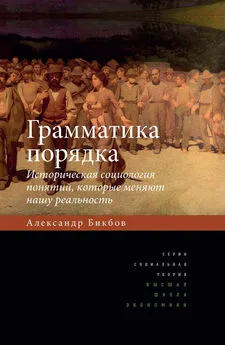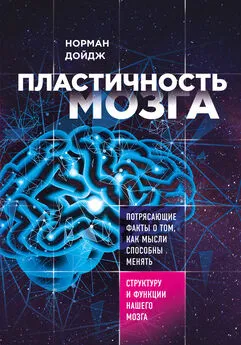Джон Тирни - Эффект негативности. Как способность замечать плохое трансформирует нашу реальность
- Название:Эффект негативности. Как способность замечать плохое трансформирует нашу реальность
- Автор:
- Жанр:
- Издательство:Литагент 5 редакция «БОМБОРА»
- Год:2021
- Город:Москва
- ISBN:978-5-04-117523-8
- Рейтинг:
- Избранное:Добавить в избранное
-
Отзывы:
-
Ваша оценка:
Джон Тирни - Эффект негативности. Как способность замечать плохое трансформирует нашу реальность краткое содержание
В основе большинства отрицательных событий лежит эффект негативности. Он вынуждает людей принимать неверные решения, чем разрушает их жизнь!
Авторы бестселлера «Сила воли», известный социальный психолог Рой Баумайстер и редактор City Journal Джон Тирни, провели масштабное исследование человеческой способности видеть плохое и не замечать хорошее. Они вывели ряд закономерностей эффекта негативности и определили стратегии борьбы с ним.
Из этой книги вы узнаете:
• почему наказание намного эффективнее награды,
• как заставить работать рациональную часть мозга и сдерживать негатив в личной и общественной жизни,
• как научиться извлекать пользу из плохих событий,
• как осознанно подавлять импульсы, которые вызывают парализующую неуверенность, панические атаки и фобии.
Эффект негативности. Как способность замечать плохое трансформирует нашу реальность - читать онлайн бесплатно ознакомительный отрывок
Интервал:
Закладка:
136 Байингтон начала обсуждать: Interviews with Eliza Byington and Will Felps.
136 Лингвист Джефф Нанберг: G. Nunberg, «Bad Apple Proverbs: There’s One in Every Bunch,» Fresh Air, NPR, May 5, 2011, https://www.npr.org/2011/05/09/136017612/bad-apple-proverbs-theres-one-in-every-bunch.
137 Бенджамин Франклин предупреждал:B. Franklin, Poor Richard’s Almanack (Philadelphia: New Printing Office, 1736), Kindle.
137 one «roten appul»: G. Chaucer, «The Cook’s Tale,» in The Canterbury Tales (Ware, UK: Wordsworth Editions, 2002), 151.
137 Социальная поддержка стала: J. Holt-Lunstad, T. B. Smith, and J. B. Layton, «Social Relationships and Mortality Risk: A Meta-analytic Review,» PLoS Med 7 (2010): e1000316, https://doi.org/10.1371/journal.pmed.1000316; J. Lynch, The Broken Heart: The Medical Consequences of Loneliness (New York: Basic Books, 1977); and J. T. Cacioppo and W. Patrick, Loneliness: Human Nature and the Need for Social Connection (New York: W. W. Norton, 2008).
138 Исследование вдов: K. S. Rook, «The Negative Side of Social Interaction: Impact on Psychological Well-Being,» Journal of Personality and Social Psychology 46 (1984): 1097–108.
138 Другие исследования касались пожилых людей: M. A. Okun, J. F. Melichar, and M. D. Hill, «Negative Daily Events, Positive and Negative Social Ties, and Psychological Distress Among Older Adults,» Gerontologist 30 (1990): 193–99; J. F. Finch, M. A. Okun, M. Barrera, A. J. Zautra, and J. W. Reich, «Positive and Negative Social Ties Among Older Adults: Measurement Models and the Prediction of Psychological Distress and Well-Being,» American Journal of Community Psychology 17 (1989): 585–605, https://doi.org/10.1007/BF00922637; and J. T. Newsom, K. S. Rook, M. Nishishiba, D. H. Sorkin, and T. L. Mahan, «Understanding the Relative Importance of Positive and Negative Social Exchanges: Examining Specific Domains and Appraisals,» Journals of Gerontology Series B: Psychological Sciences and Social Sciences 60 (2005): 304–12, https://www.ncbi.nlm.nih.gov/pmc/articles/PMC3833824/.
138 безработных: A. D. Vinokur and M. van Ryn, «Social Support and Undermining in Close Relationships: Their Independent Effects on the Mental Health of Unemployed Persons,» Journal of Personality and Social Psychology 65 (1993): 350–59.
139 Исследование под названием: M. K. Duffy, D. Ganster, and M. Pagon, «Social Undermining in the Workplace,» Academy of Management Journal 45 (2002): 331–51, https://doi.org/10.2307/3069350.
139 сети фаст-фуда в Австралии: P. D. Dunlop and K. Lee, «Workplace Deviance, Organizational Citizenship Behavior, and Business Unit Performance: The Bad Apples Do Spoil the Whole Barrel,» Journal of Organizational Behavior 25 (2004): 67–80, https://dx.doi.org/10.1002/job.243.
140 качество работы: G. M. Hurtz and J. J. Donovan, «Personality and Job Performance: The Big Five Revisited,» Journal of Applied Psychology 85 (2000): 869–79.
141 командами из четырех человек: L. M. Camacho and P. B. Paulus, «The Role of Social Anxiousness in Group Brainstorming,» Journal of Personality and Social Psychology 68 (1995): 1071–80.
141 нескольких производственных компаний: M. R. Barrick, G. L. Stewart, M. J. Neubert, and M. K. Mount, «Relating Member Ability and Personality to Work-Team Processes and Team Effectiveness,» Journal of Applied Psychology 83 (1998): 377–91.
142 рассмотреть проблему: W. Felps, T. Mitchell, and E. Byington, «How, When, and Why Bad Apples Spoil the Barrel: Negative Group Members and Dysfunctional Groups,» Research in Organizational Behavior 27 (2006): 175–222, and S. Heen, «Bad Apple Behavior and Its Impact on Team Results,» White Paper No. 2, Triad Institute, https://triadconsultinggroup.com/sites/default/files/Triad_Consulting_Whitepaper_2_Case_Study_%20114_Bad_Apples.pdf.
143 постоянно ведет себя мрачно: S. Kaplan, J. C. Bradley, J. N. Luchman, and D. Haynes, «On the Role of Positive and Negative Affectivity in Job Performance: A Meta-analytic Investigation,» Journal of Applied Psychology 94 (2009): 162–76.
143 в итоге сами чувствуют себя плохо: M. J. Howes, J. E. Hokanson, and D. A. Loewenstein, «Induction of Depressive Affect After Prolonged Exposure to a Mildly Depressed Individual,» Journal of Personality and Social Psychology 49 (1985):1110–13.
143 производственную фирму на Среднем Западе: A. G. Miner, T. M. Glomb, and C. Hulin, «Experience Sampling Mood and Its Correlates at Work,» Journal of Occupational and Organizational Psychology 78 (2005): 171–93.
144 Уоррен Джонс: Personal communication.
145 работы Баумайстера: R. F. Baumeister and M. R. Leary, «The Need to Belong: Desire for Interpersonal Attachments as a Fundamental Human Motivation,» Psychological Bulletin 117 (1995): 497–529, https://dx.doi.org/10.1037/0033–2909.117.3.497.
145 соавтора в лице Джин Твендж: R. F. Baumeister, L. E. Brewer, D. M. Tice, and J. M. Twenge, «Thwarting the Need to Belong: Understanding the Interpersonal and Inner Effects of Social Exclusion,» Social and Personality Psychology Compass 1 (2007): 506–20.
145 социальный смертный приговор: J. M. Twenge, K. R. Catanese, and R. F. Baumeister, «Social Exclusion Causes Self-Defeating Behavior,» Journal of Personality and Social Psychology 83 (2002): 606–15, https://doi.org/10.1037/0022–3514.83.3.606.
146 несколько сотен исследований:C. N. DeWall and B. J. Bushman, «Social Acceptance and Rejection: The Sweet and the Bitter,» Current Directions in Psychological Science 20 (2011): 256–60.
146 «Отшельник Северного Пруда»: M. Finkel, The Stranger in the Woods (New York: Knopf, 2017), 62.
147 самоконтроль страдает: R. F. Baumeister, C. N. DeWall, N. J. Ciarocco, and J. M. Twenge, «Social Exclusion Impairs Self-Regulation,» Journal of Personality and Social Psychology 88 (2005): 589–604, https://doi.org/10.1037/0022–3514.88.4.589.
147 в тестах на интеллект: R. F. Baumeister, J. M. Twenge, and C. K. Nuss, «Effects of Social Exclusion on Cognitive Processes: Anticipated Aloneness Reduces Intelligent Thought,» Journal of Personality and Social Psychology 83 (2002): 817–27, https://doi.org/10.1037/0022–3514.83.4.817.
147 достаточно сдержанной: J. M. Twenge, K. R. Catanese, and R. F. Baumeister, «Social Exclusion and the Deconstructed State: Time Perception, Meaninglessness, Lethargy, Lack of Emotion, and Self-Awareness,» Journal of Personality and Social Psychology 85 (2003): 409–23, https://doi.org/10.1037/0022–3514.85.3.409, and G. C. Blackhart, B. C. Nelson, M. L. Knowles, and R. F. Baumeister, «Rejection Elicits Emotional Reactions but Neither Causes Immediate Distress nor Lowers Self-Esteem: A Meta-analytic Review of 192 Studies on Social Exclusion,» Personality and Social Psychology Review 13 (2009): 269–309.
147 сердцебиения: B. Gunther Moor, E. A. Crone, and M. W. van der Molen, «The Heartbrake of Social Rejection: Heart Rate Deceleration in Response to Unexpected Peer Rejection,» Psychological Science 21 (2010): 1326–33.
147 Физические ощущения людей притуплялись: C. N. DeWall and R. F. Baumeister, «Alone but Feeling No Pain: Effects of Social Exclusion on Physical Pain Tolerance and Pain Threshold, Affective Forecasting, and Interpersonal Empathy,» Journal of Personality and Social Psychology 91 (2006): 1–15, https://doi.org/10.1037/0022–3514.91.1.1.
147 в видеоигру «Кибер-мяч»:N. I. Eisenberger, M. D. Lieberman, and K. D. Williams, «Does Rejection Hurt? An fMRI Study of Social Exclusion,» Science 302 (2003): 290–92. See also N. I. Eisenberger, J. M. Jarcho, M. Lieberman, and B. D Naliboff, «An Experimental Study of Shared Sensitivity to Physical Pain and Social Rejection,» Pain 126 (2006): 132–38, https://doi.org/10.1016/j.pain.2006.06.024.
148 романтический партнер:H. E. Fisher et al., «Reward, Addiction, and Emotion Regulation Systems Associated with Rejection in Love,» Journal of Neurophysiology 104 (2010): 51–60, and E. Kross, M. G. Berman, W. Mischel, E. E. Smith, and T. D. Wager, «Social Rejection Shares Somatosensory Representations with Physical Pain,» Proceedings of the National Academy of Sciences 108 (2011): 6270–75, https://doi.org/10.1073/pnas.1102693108.
148 обнаружил, что Тайленол: C. N. DeWall et al., «Acetaminophen Reduces Social Pain: Behavioral and Neural Evidence,» Psychological Science 21 (2010): 931–37.
148 употребление марихуаны:T. Deckman, C. N. DeWall, R. Gilman, B. Way, and S. Richman, «Can Marijuana Reduce Social Pain?» Social Psychological and Personality Science 5 (2014): 131–39.
148 менее склонны к помощи: J. M. Twenge, R. F. Baumeister, C. N. DeWall, N. J. Ciarocco, and J. M. Bartels, «Social Exclusion Decreases Prosocial Behavior,» Journal of Personality and Social Psychology 92 (2007): 56–66, https://doi.org/10.1037/0022–3514.92.1.56.
149 « покрытые кровью очки»: C. N. DeWall, J. M. Twenge, S. A. Gitter, and R. F. Baumeister, «It’s the Thought That Counts: The Role of Hostile Cognition in Shaping Aggressive Responses to Social Exclusion,» Journal of Personality and Social Psychology 96 (2009): 45–59.
150 стрельба в школе: M. R. Leary, R. M. Kowalski, L. Smith, and S. Phillips, «Teasing, Rejection, and Violence: Case Studies of the School Shootings,» Aggressive Behavior 29 (2003): 202–14.
150 объединяются, чтобы отомстить: I. van Beest, A. R. Carter-Sowell, E. van Dijk, and K. D. Williams, «Groups Being Ostracized by Groups: Is the Pain Shared, Is Recovery Quicker, and Are Groups More Likely to Be Aggressive?» Group Dynamics: Theory, Research, and Practice 16 (2012): 241–54, https://dx.doi.org/10.1037/a0030104.
151 в дальнейшем популярную книгу: R. I. Sutton, The No Asshole Rule (New York: Hachette, 2007), Kindle.
152 личностного теста Большая Пятерка: J. Hogan, P. Barrett, and R. Hogan, «Personality Measurement, Faking, and Employment Selection,» Journal of AppliedPsychology 92 (2007): 1270–85; J. Hogan and B. Holland, «Using Theory to Evaluate Personality and Job-Performance Relations: A Socioanalytic Perspective,» Journal of Applied Psychology 88 (2003): 100–112; and M. R. Barrick and M. K. Mount, «The Big Five Personality Dimensions and Job Performance: A Meta-analysis,» Personnel Psychology 44 (1991): 1–26.
Читать дальшеИнтервал:
Закладка:




![Медина Мирай - Зазеркалье Нашей Реальности [litres]](/books/1143348/medina-miraj-zazerkale-nashej-realnosti-litres.webp)





